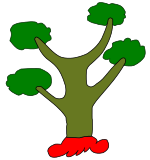Huejutla de Reyes | |
|---|---|
Municipality and town | |
 | |
| Coordinates: 21°08′N98°25′W / 21.133°N 98.417°W | |
| Country | |
| State | Hidalgo |
| Municipal seat | Huejutla de Reyes |
| Area | |
• Total | 377.8 km2 (145.9 sq mi) |
| Population (2005) | |
• Total | 115,786 |
Huejutla de Reyes is a city and one of the 84 municipalities of Hidalgo, in central-eastern Mexico. The name comes from the Nahuatl huexotl ("willow") and tlan ("place"), [1] while "de Reyes" commemorates local cobbler Antonio Reyes Cabrera who died defending Huejutla from French invaders in 1866. [2]
Contents
The municipality covers an area of 377.8 km2 in the northeast of Hidalgo, in the Huasteca region, on the border with the state of Veracruz. As of 2005, the municipality had a total population of 115,786. [3] but only 36,305 live in the metropolitan area, whereas the remaining population live in various small communities. Around 73,200 people speak indigenous languages, primarily Huasteca Nahuatl. [4]
It has been called "the Heart of La Huasteca". [5]


